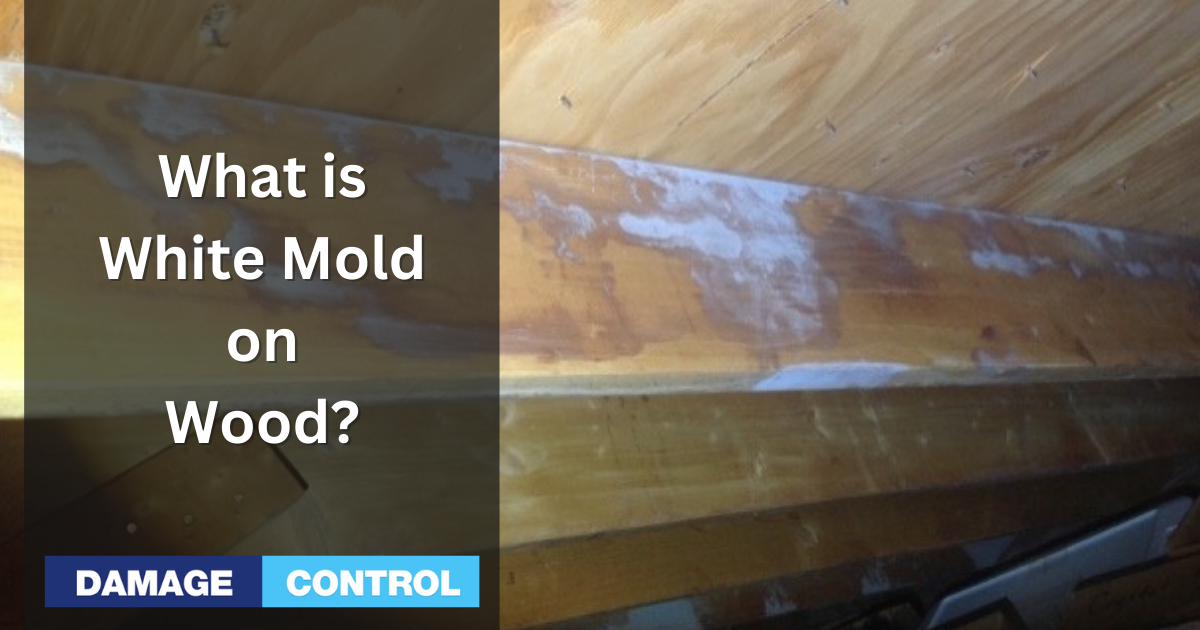White mold is a fungus that can grow on wood and other organic materials. It typically appears as a white, fuzzy growth on the surface of the wood. Various factors, including high humidity levels, poor ventilation, and moisture accumulation, cause this mold.
White mold on wood can be a menace, but it can be defeated. Learn how to take action and keep your wooden surfaces mold-free.
Prevention of White Mold on Wood
Preventing white mold from growing on wood is the best way to avoid having to remove it later. There are three main steps to prevent white mold on wood:
Minimizing moisture in the environment
The most important step in preventing white mold on wood is to keep it as dry as possible.
This can be achieved by:
- Using dehumidifiers in areas where wood is stored or used.
- Fixing any leaks or water damage immediately.
- Keeping the humidity level in the room below 60%.
- Proper ventilation
Good air circulation is also important for preventing white mold on wood. Ensure that any areas where wood is stored or used are well-ventilated, with plenty of fresh air flowing through the space.
This can be achieved by:
- Installing vents or fans to improve air circulation.
- Opening windows or doors to let in fresh air.
- Avoid storing wood in damp or poorly ventilated areas.
- Cleaning and maintaining wood
Regularly cleaning and maintaining wood surfaces can also help prevent white mold growth.
This includes:
- Wiping down wood surfaces with a clean, dry cloth regularly.
- Keeping wood free of debris or dust.
- Applying a sealant to protect it from moisture.
- Removal of White Mold on Wood
If white mold does appear on wood, it's important to take action to remove it as soon as possible to prevent it from spreading.
There are two main categories of methods for removing white mold on wood:
Non-toxic methods
These are natural cleaning solutions that can be applied to the affected area with a clean cloth or sponge:
Vinegar: Mix vinegar and water in a spray bottle and apply to the affected area. Wipe with a clean cloth.
Hydrogen peroxide: Mix 1 part hydrogen peroxide and 2 parts water in a spray bottle and apply to the affected area. Let it sit for 10 minutes, then wipe with a clean cloth.
Tea tree oil: Mix 1 teaspoon tea tree oil and 1 cup water in a spray bottle and apply to the affected area. Let it sit for 10 minutes, then wipe with a clean cloth.
Mechanical scrubbing using a stiff-bristled brush or sandpaper to scrub away the mold can also be effective, especially for small areas of mold growth.
Toxic methods
These are more aggressive methods for removing white mold on wood, but they come with some risks:
Bleach: Mix 1 cup of bleach and 1 gallon of water in a spray bottle and apply to the affected area. Let it sit for 10 minutes, then wipe with a clean cloth. Wear gloves and eye protection when using bleach.
Commercial fungicides: Follow the instructions on the label carefully. Wear gloves and eye protection when using commercial fungicides. Only use in well-ventilated areas.
Conclusion
White mold on wood can be a frustrating and potentially harmful problem. However, by preventing it from growing and using the appropriate methods to remove it, you can keep your wood surfaces looking and functioning at their best. Remember to keep the environment dry, well-ventilated, and clean and use natural or toxic methods to remove white mold growth.

